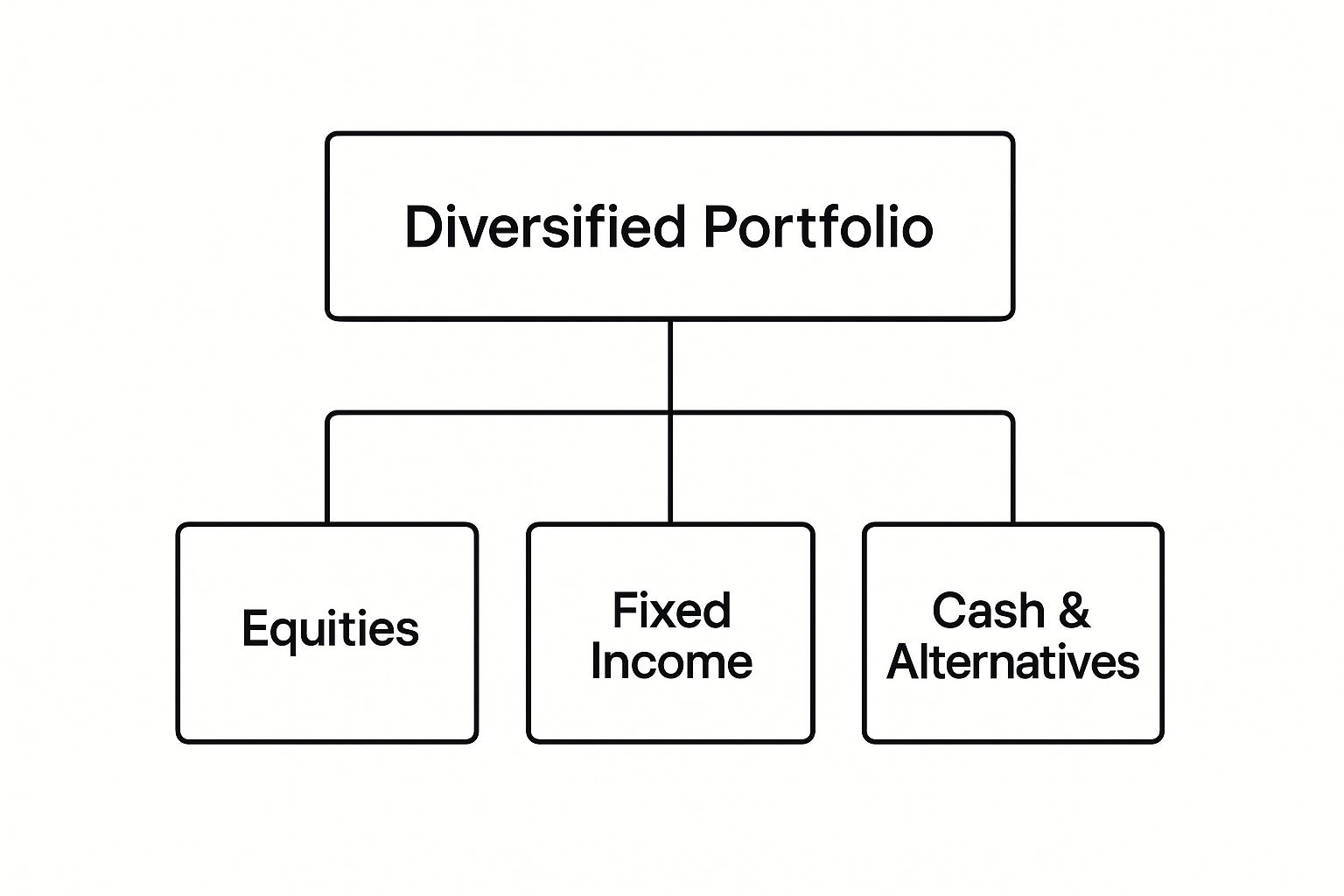Strategies for a Diversification Investment Portfolio
- Parkview Partners Capital Management
- Nov 6
- 4 min read
For those serious about building and preserving wealth, a diversified investment portfolio is not just a strategic option—in our view, it’s a foundational element of a sound financial plan. True diversification means more than holding a mix of investments; it’s a deliberate strategy to manage risk by spreading assets across different categories. The goal is to help smooth out market fluctuations and create a portfolio that’s better positioned to navigate varying economic conditions.
Why Diversification Matters
Diversification is rooted in the principle of not concentrating all capital in a single investment. By allocating funds across multiple asset types, the potential underperformance of any one area may not disproportionately affect the overall portfolio.
Think of it like constructing a championship sports team—no winning team is made of only quarterbacks. Each player has a unique role, just as each investment type contributes differently to overall performance. A well-constructed portfolio operates the same way, aiming to balance risk and returns.
The potential advantage of diversification lies in combining assets that don’t always move in the same direction. Market leadership changes—what performs well one year may lag the next. A strategic mix helps ensure your portfolio isn’t dependent on one single performer.

The Core Components of Diversification
Effective diversification involves more than splitting between stocks and bonds. A resilient portfolio spreads capital across asset classes, regions, and industries to manage risk and capture global opportunities.
Asset Classes
A diversified portfolio may include equities, fixed income, cash, and alternative investments—each with distinct risk and return profiles.
Geographic Regions
Investing internationally may help insulate against downturns in any single economy. Exposure to both developed and emerging markets can help provide buffers from volatility.
Sectors and Industries
Spreading investments across industries such as healthcare, technology, and consumer goods prevents overexposure to one area of the economy.

Understanding Asset Allocation
Asset allocation serves as the architectural blueprint of your portfolio, defining how much capital to allocate among various investment types. Each class offers its own balance of risk and potential return.
Equities (Stocks): Offer long-term growth potential but higher volatility.
Fixed Income (Bonds): Provide income through interest payments.
Cash and Equivalents: Offer liquidity and capital preservation.
Alternatives: Include real estate, commodities, or private equity—assets that may move independently of traditional markets.
The relationship between these categories—known as correlation—is critical. Investments that move differently from one another can help reduce overall volatility.
A common benchmark example is the 60/40 portfolio, with 60% in stocks for growth and 40% in bonds for stability. While this model isn’t right for everyone, it demonstrates how balanced allocation can create consistency through market cycles.

Expanding Across Global Markets
Limiting investments to a single country can expose investors to unnecessary concentration risk. International diversification provides access to different economic engines and opportunities.
Developed Markets: May offer less volatility and mature infrastructure.
Emerging Markets: Present higher growth potential but may be more volatile.
Modern tools such as global mutual funds and ETFs make it easier to access these markets efficiently. Investors can also consider currency hedging to manage exchange rate risk.
Adding Resilience with Alternatives
For many investors, building a truly diversified portfolio involves looking beyond public stocks and bonds to alternative investments. This is a broad category for assets that do not fit into traditional buckets.
The primary role of alternatives in a portfolio is often to provide a different source of returns—one with a potentially low correlation to public markets. This means their performance may not move in tandem with major stock indices. When traditional assets face headwinds, alternatives can act as a stabilizing force, helping to smooth out portfolio performance. This characteristic can be a powerful tool for managing risk.
Exploring the World of Alternatives
Alternative investments—such as real estate, private equity, and commodities—can add another layer of diversification. These assets often move independently of stocks and bonds, helping to stabilize performance during volatile periods.
However, alternatives require careful consideration:
They may be less liquid, requiring long-term commitments.
Some carry higher minimums or complex structures.
Due diligence on managers and strategies is essential.
Long-Term Discipline and Review
Diversification is not a one-time event but an ongoing process. Portfolios should evolve with life changes, goals, and market conditions. Regular rebalancing keeps allocations aligned with your strategy and risk tolerance.
At Parkview Partners Capital Management, we are dedicated to helping clients build and manage portfolios with discipline and foresight. To discuss how these strategies might apply to your specific situation, contact our team for a personalized consultation.
Investment advice offered through Stratos Wealth Partners, Ltd., a registered investment advisor. Stratos Wealth Partners, Ltd and Parkview Partners Capital Management are separate entities. Neither Stratos nor Parkview Partners Capital Management provides legal or tax advice. Please consult legal or tax professionals for specific information regarding your individual situation.
There is no guarantee that a diversified portfolio will enhance overall returns or outperform a non-diversified portfolio. Diversification does not protect against market risk. Investing involves risk including loss of principal.
Comments